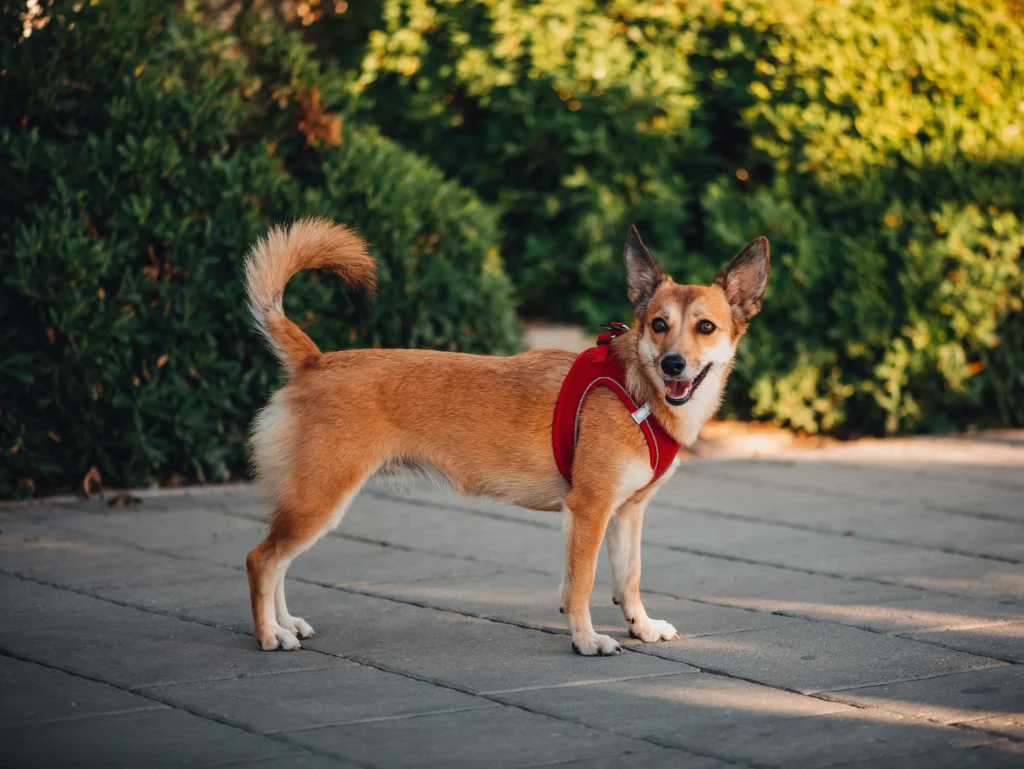The Norwegian Lundehund is a small Spitz-type dog from Norway. The word “Lunde” means puffin bird, and “hund” means dog. The dog was developed to hunt puffin birds and their eggs in difficult or inaccessible places, like caves or cliffs.
History and Origin of the Lundehund Dog
The Norwegian Lundehund is believed to be an ancient dog that was initially used to hunt puffins along rocky cliff faces. It was developed specifically for this task. It is very flexible, can fold its ears tightly shut, and has six toes that allow it to grip cliff walls.
In the 1940s, a distemper epidemic destroyed most of the remaining Lundehunds, but breeders brought the breed back with the few breedable dogs that remained, some say as few as six.
The breed is also able to throw out its arm at the foreshoulder joint and turn its head upside down. Its unique jaw, some believe, can be traced to the dog before the Ice Age.
Physical Description of the Norwegian Puffin Dog
The Lundehund is a small dog that is longer than it is tall. It has a wedge-shaped head, slanted brown eyes, and erect triangular ears. It is double-coated and has a tail carried over its back or hangs.
It is sable and white with a white ruff around its neck and additional white markings on the legs, belly, and face.
Height, Weight, and Life Span of the Lundehund Breed
The average height of the Lundehund dog is about 12.5 to 15 inches, and the average weight is about 13.5 to 15.5 pounds. The average life span of the Lundehund is about 12-15 years.
Temperament of the Puffin Dog
The Lundehund is a cheerful and lively dog. It is devoted to family but wary of strangers. It gets along with most dogs but is unreliable with small animals.
The breed is independent and strong-minded, so training can be difficult. It will sometimes revert to primitive behaviors such as hunting and eliminating in the home.
Best Ownership of the Dog
It is adaptable but will do best in a rural or suburban home. Its owner should be financially prepared for the dog’s health problems.
Special Needs Norwegian Puffin Dog
The dog is small but highly active. You must ensure the following care and management for your lovely dog:
- Activities
- Exercise
- Medical care
- Socializing
- Training
Possible Health Concerns of the Lundehund Dog
The dog is generally healthy and fit all the time. You must ensure regular deworming and vaccination after consultation with your vet. The following diseases are more commonly observed in this breed:
- Protein-losing enteropathy (Lundehund syndrome or PLE).
- Gastrointestinal disease.
- The Lundehund is subject to a severe disease called intestinal enteropathy, which substantially reduces the life expectancy of most dogs. Up to 90 percent of Lundehunds are diagnosed with the disease, also called Lundehund syndrome.
Final Talk on the Lundehund Dog
The Norwegian Puffin dog is a rare small dog breed from Europe. The dog was about to become extinct during the first half of the 20th century. Later, the dog was again bred and saved. The dog is highly playful, active, and friendly. You can keep the dog in your home as a family member.
